Fiber-optic broadband is becoming less of a rarity.
Subscriptions to the high-speed networking service grew 13.9 percent from June 2012 to June 2013, according to newly released statistics from the Organization for Economic Cooperation and Development (OECD), which monitors economic trends in North America, Europe, Australia, Japan, South Korea, Turkey, and some other developed countries and regions.
That growth means fiber-optic links now are used for 15.8 percent of broadband connections in the OECD area.
Of course, usage varies widely by country. Japan leads with 68.5 percent penetration of fiber-optic links, with South Korea close behind at 62.8 percent. Sweden is in third place at 35.9 percent; the US is in 14th place with an estimated 7.7 percent.
The fastest growth in new connections is taking place in Mexico, with a 290 percent increase in fiber connections from 2012 to 2013. The UK grew at 172 percent; Chile at 171 percent; New Zealand at 141 percent; Australia at 121 percent.
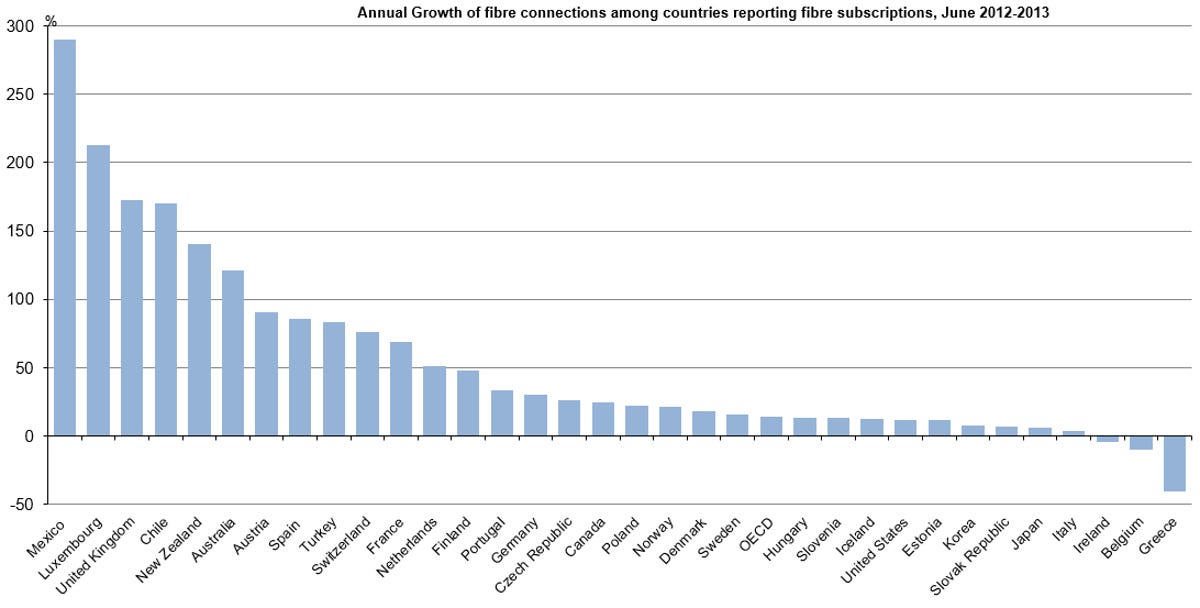

OECD
Though the US lags other countries in some areas — its fiber-optic growth was just 12 percent, for example — it leads the OECD in one prominent domain, the sheer number of broadband connections. The US accounts for 299 million of the OECD’s 851 wireless data connections, and for 92 million of the OECD’s 332 million broadband connections using fixed lines such as those for DSL and cable TV.
Fiber-optic lines offer much higher data rates than the copper wiring that’s more common for bringing broadband Internet access to homes. Copper wiring is convenient, since it’s typically already installed for phone and cable TV service, but fiber optics can reach longer distances and enable data rates of 100 megabits per second to 1 gigabit per second.
Among other projects, Google Fiber is bringing 1Gbps broadband to four US cities, but generally fiber links are unusual in the States. It’s expensive to lay fiber-optic lines to homes, and telecommunications companies have been able to steadily squeeze more and more out of copper lines.
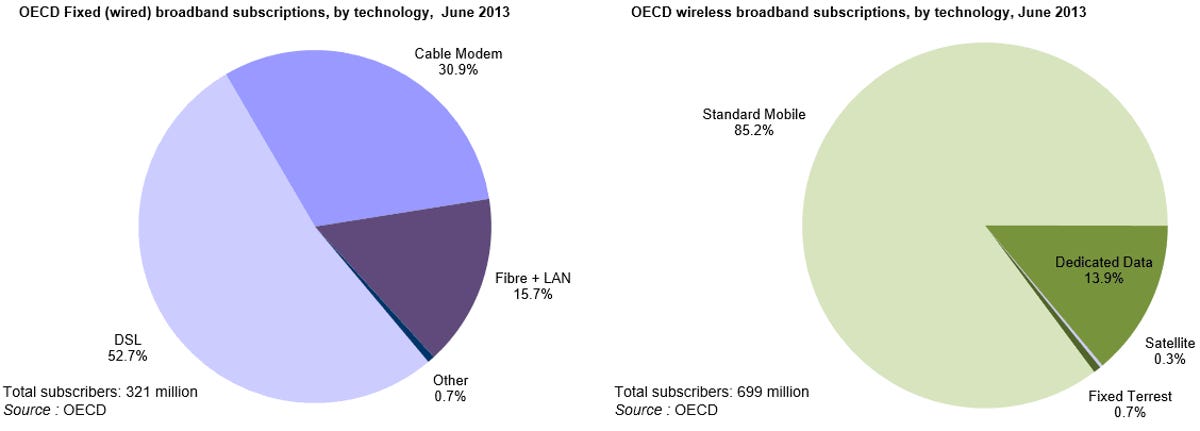

OECD
One illustration of the difficulties: Seattle’s high-speed fiber broadband plan faltered as the company implementing it, Gigabit Squared, said it was having trouble raising enough money. Intermediate approaches also are possible. for example, it’s common in the UK to lay fiber-optic lines only as far as the network equipment near homes but rely on the existing copper wiring for the last leg of the hookup.
Few homes need 1Gbps or even 100Mbps broadband today, but new computing uses have steadily absorbed existing capacity — streaming audio, streaming video, online backup, software updates, video chat, multiplayer games, animated GIFs, and more.
Higher-resolution 4K video is the next bandwidth-hogging transition the industry is likely to make, and households might want to watch multiple shows at once over the same connection or record one show on a DVR while watching another. The arrival of smartphones and tablets means people are hooking up more devices to the network, too. And don’t forget about all the Internet-connected cars, door locks, thermostats, solar panels, electric car chargers, smoke detectors, and heart rate monitors.
Across the OECD, cable-based broadband was more common than fiber, accounting for 30.9 percent of connections in 2013. The most common was DSL (Digital Subscriber Line), which accounted for 52.7 percent of connections, the OECD said.
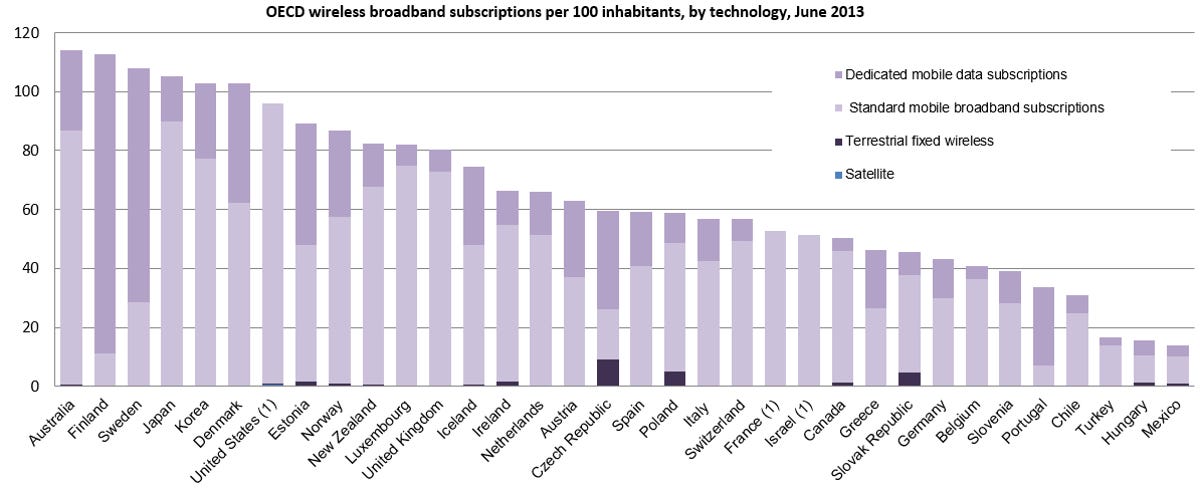

OECD
Plenty of people have wireless broadband services, too, that don’t rely on fixed lines leading to homes. Ordinary mobile-network links — those used by mobile phones — dominate, with usage at 85.2 percent, though there are other options such as dedicated data dongles that link computers to wireless networks. Satellite-based broadband, which helped Europe meet a goal of 100 percent broadband coverage by 2013, remains very rare.
“Satellite only represents 0.26 percent of wireless broadband subscriptions — about 2 million in the OECD area,” said OECD analyst Agustin Diaz-Pines “In some countries it is slightly higher such as the United States (0.5 percent) and Australia (0.4 percent). It is the technology you use to get where no other technology is economical.”
In six countries — Australia, Finland, Sweden, Japan, Korea, and Denmark — people have enough wireless subscriptions that, on average, there is more than one per country resident, the OECD said.
The European Commission is striving to push Europe toward a new broadband goal for 2020: 100 percent coverage at speeds of 30Mbps or better and 50 percent coverage at 50Mbps or better. But network operators complain that push is too expensive to make financial sense.
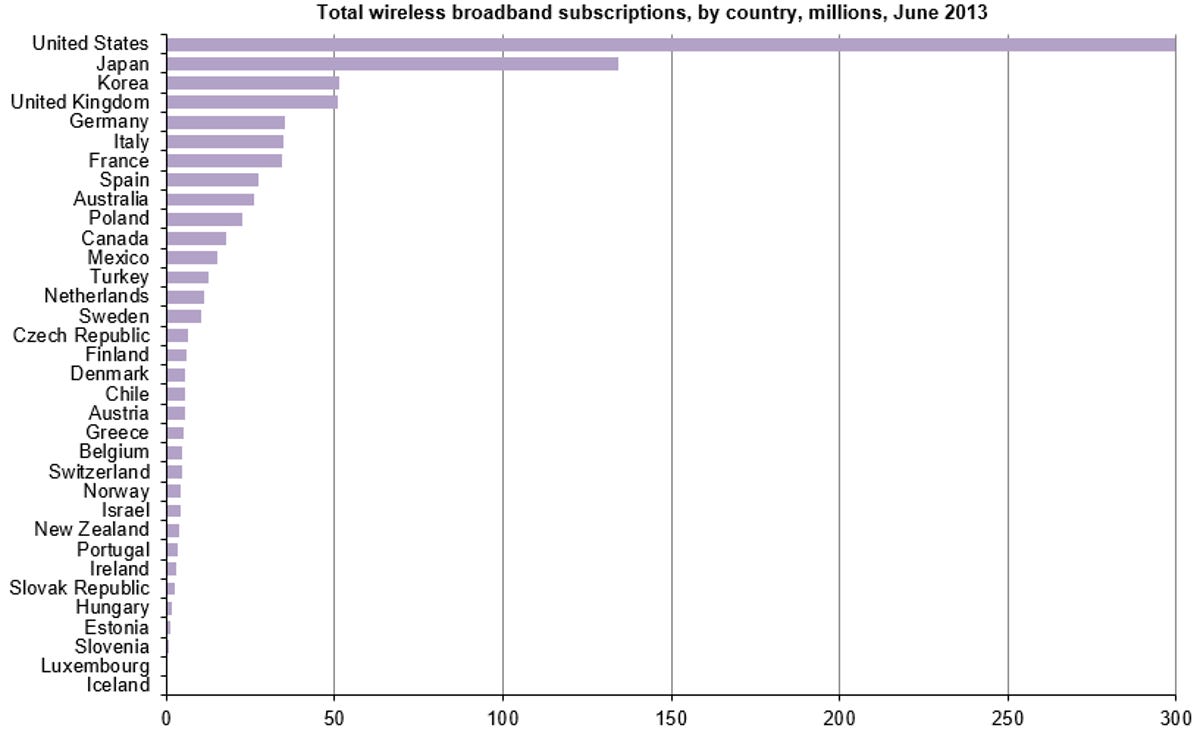

OECD
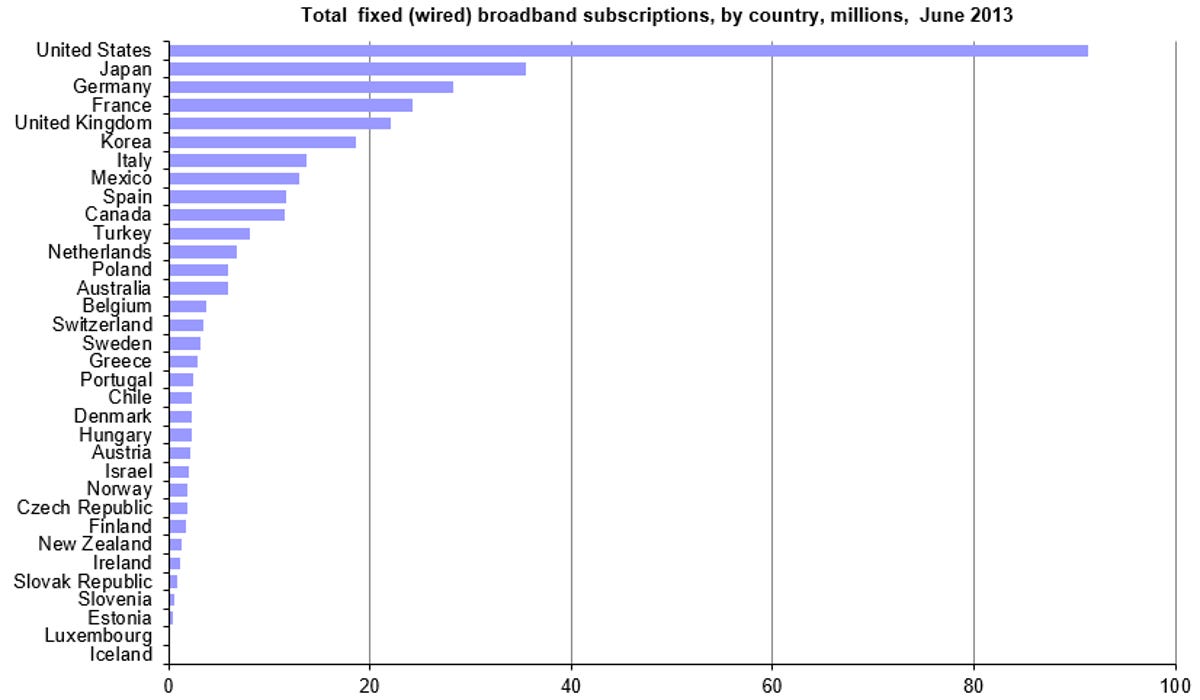

OECD



